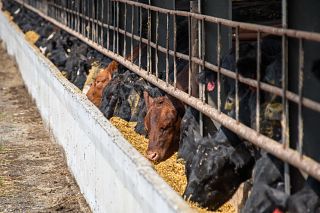How will we achieve our goal?
- Improving cattle performance and financial health of cattle operations; and
- Diverting food waste from landfills by reduction in food waste and utilizing waste in other avenues.

The U.S. beef supply chain will improve efficiencies, enhance product value and increase demand, which collectively will enable operations and businesses to maintain and improve individual and community financial health.
Fundamentally, the U.S. beef industry exists to transform lower value inputs (forages, grains) into a high-quality and desirable protein source to nourish people. Improving the efficiency of this transformation and minimizing waste (resources, time, capital) throughout the beef value chain is a major driver of beef’s continuous improvement in sustainability.
Feedyard owner and operators routinely monitor a variety of components to evaluate cattle performance and operational efficiency. Among these are such things as average daily gain, feed to gain ratio, and animal health. Reviewing and comparing performance outcomes over time can enhance decision making and contribute to profitability for the feedyard, thereby directly impacting the Efficiency and Yield Indicator.
Reducing the amount of waste sent to landfill is good for the planet, as generating less waste means less money spent on energy, ingredients, packaging, and waste removal services. Composting waste and recycling processing and packaging materials can save money.
The beef value chain has a responsibility to minimize waste and ensure as much protein reaches its appropriate end destination to feed people rather than being diverted to a landfill. Not only does decreasing waste increase profitability but taking steps to decrease waste demonstrates the industry truly values the natural resources involved in producing beef and the nutritional value of beef to the human population.